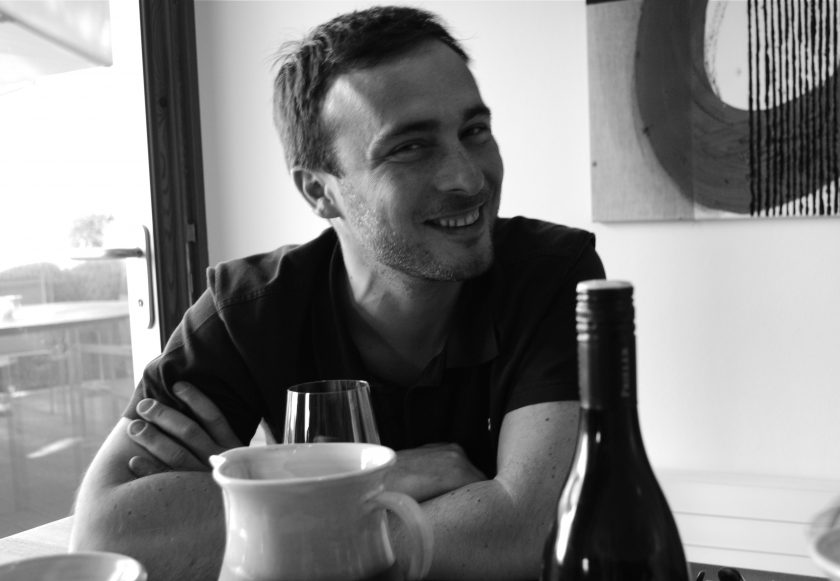Prieler
Prieler (20 ha)
Schützen / Neusiedlersee – Hügelland / Austria
The Prieler estate, in Schützen on the western side of the Lake Neusiedl, is a historic old farm, once dedicated to many types of agriculture but now specializing in grape growing. Two generations of the Prieler family now run the estate: Engelbert and Irmgard, who in 1972 focused the estate on quality production of several grape varieties, mainly Blaufränkisch and Burgundian varieties. Their son, Georg, now heads the estate and continues working to best express the unique terroir of the Leithagebirge.
Prieler’s 20 hectares are currently cultivated in vineyards between the Leithagebirge, the last outpost of the eastern Alps that protect the vines from the western winds, and the Lake Neusiedl, which tempers the hot climate of the Pannonian plain. Basking in 2000 hours of sunshine annually, North Burgenland is the sunniest region in all of central Europe, with far below average rainfall. Soils vary dramatically in this area around the Schützen Stein. Seeberg and Sinner vineyards contain fossil bearing limestone and are best suited, to Prieler’s outstanding Chardonnay and Pinot Blanc. The iron-rich, brown loam of the Johanneshöhe on the slopes of the Leithaberg produces delicious Blaufränkisch, while the Goldberg vineyard, filled with ‘glimmerschiefer’, or mica-schist, flecked with gold, produces one of the most important, world-class wines in all of Austria.
Prieler’s focus on Blaufränkisch as well as Burgundian varieties such as chardonnay, pinot blanc, and pinot noir, which have a long history of cultivation in this part of Burgenland. The area around Vienna was cultivated by Cistercian and Franciscan monks, who founded monasteries along the Danube and brought these varieties from France and Germany. Silvia Prieler, with a PhD in biochemistry, brings international experience to the cellar including an internship at Domaine Dujac in Burgundy. In the vineyards, the Prieler’s prune rigorously, plant cover crops, and pay meticulous attention to canopy management as their region receives so much sunlight. They make multiple, careful selections during harvest in order to control alcohol while still achieving physiological ripeness.
The grapes are carefully crushed and fermented at closely controlled temperatures in steel tanks or wooden casks. The character of the variety and the vineyard determines where the wine will mature. For example, the Seeberg pinot blanc will remain in stainless steel to maximize freshness and clarity, the Blaufränkisch from Johanneshöhe will be raised in large oak casks, and top crus like Goldberg will mature in barrique. Prieler’s meticulous work in the vineyard and in the cellar has earned them awards from Falstaff Magazine (2009 “Vintner of the Year”), Vinaria Magazine (“Best wines of Austria” 2012/2013) and was among Jancis Robinson’s top picks for Austrian red wines. Peter Moser, editor-in-chief of Falstaff wrote, “We were extremely impressed by the Prieler family’s high standards in all wine categories and by their sensitive approach to the specific properties of the respective types of vine and the selection of just the right terroir.”
- Vineyard Area: 20 hectares
- Top Sites:
- Seeberg: Limestone dotted with fossils, planed to Pinot Blanc
- Haidsatz: “a layer of limestone over a slab of schist” planted to Pinot Blanc
- Marienthal: Calcerous sand and limestone over deep chalk, planted to Blaufränkisch
- Goldberg: Mica-schist soils planted to Blaufränksich
- Soil Types: Mica-schist, Sand, Limestone, Chalk
- Grape Varieties: Blaufränkisck, Pinot Blanc, Chardonnay, Pinot Noir, Welschriesling, Sankt Laurent, Cabernet Sauvignon, Merlot




